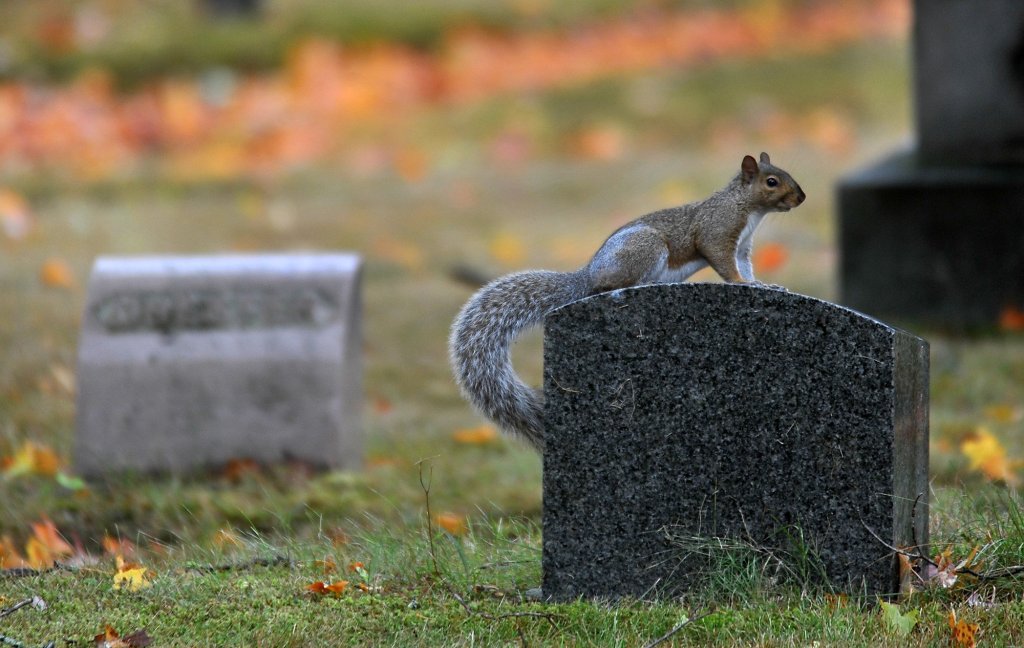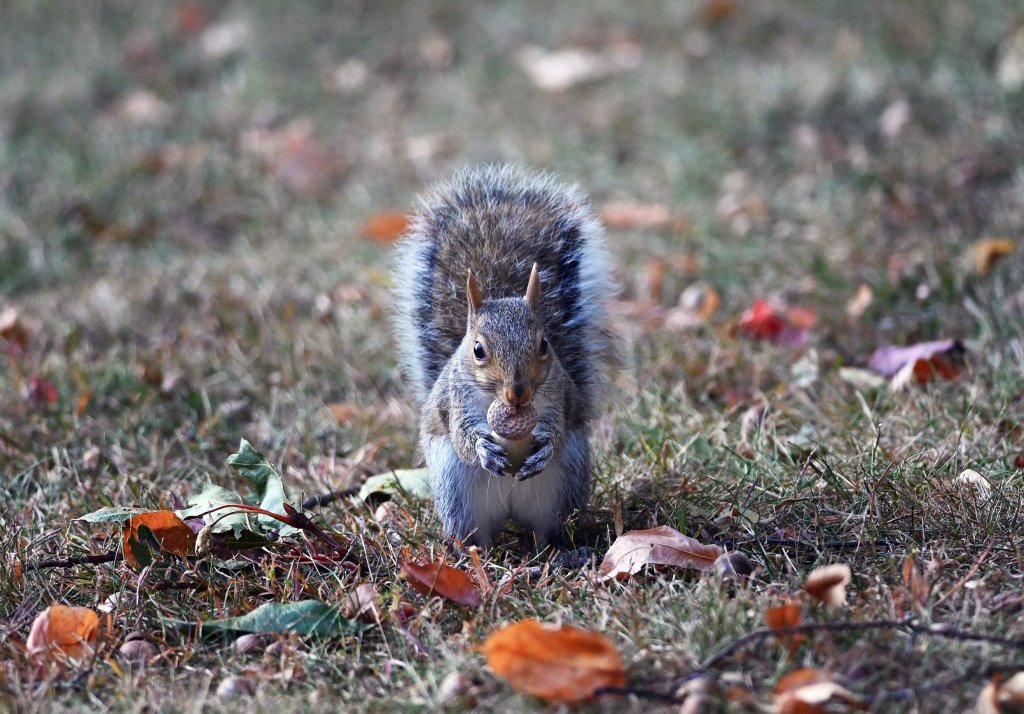
The abundance of squirrels this fall seems to come in two varieties — either they seem to be hoping for a role as contestants in Fat Bear Week or they’re sprawled lifeless on the side of the road (if not splattered in the middle of it).
Not since the Great Squirrel Apocalypse of 2018 do I remember having to watch my step or avert my eyes so often while walking down the sidewalk or getting in my car. Why bother with Halloween decorations when there’s a much gorier real-life graveyard everywhere we look?
Doug Hitchcox, staff naturalist at Maine Audubon, said there’s no good data set that tracks the size of the squirrel population, but after the previous couple years produced bumper crops of acorns for them to eat (much like in 2018), it makes sense that more would have survived the past winter and gone on to produce more babies this spring and summer.
A post on the Maine Wildlife Facebook page of a squirrel swimming, accompanied by reports of similar sightings, is another indication to him that there are more around than usual. These little guys aren’t doing laps; they’re being pushed out of their parents’ territories and looking for new homes.
University of New England professor Noah Perlut, who in 2010 started a project studying gray squirrel behavior around the Biddeford campus, said he’s noticed more of them this fall than any other year since the “bananas” situation in 2018 — what he and Hitchcox both refer to, somewhat officially, as Squirrelmageddon.
Although his project doesn’t track population size, the fact that one of the squirrels that his team tagged is no longer in range of their radio signal also shows that they’re having to travel farther than usual to find a home base.
But if you’re hyperaware of squirrels around you, it might also be a matter of perspective. Since a 2013 explosion in the snowy owl population sent a record number to Maine in search of food, Hitchcox said, people haven’t stopped asking when there will be another boom.
“It was a once-in-a-lifetime occurrence. It got so many people paying attention and cued in,” he said. “I wonder how much that’s the same case with what we saw with the squirrels.”
Indeed, the fall of 2018 was nothing like Hitchcox had seen before in terms of the amount of roadkill. He remembers taking a drive from Falmouth to Bangor and, with a hand clicker he uses for birding, tallying over 300 dead squirrels round trip. The number he saw on a twice-as-long drive to Aroostook County this October didn’t come close.
The 25 dead squirrels reported to the city of Portland through its See Click Fix platform in September and October was only a couple more than the same time period last year, but twice as many as in 2023.
Fall is always when we see the most roadkill (about 80% of the year’s total, Perlut guessed), because the timing of squirrels’ breeding seasons means this is when the number running around is largest. We also notice squirrels more at this time of year, Hitchcox said, because they’re very active, building nests and gathering food before winter.
This year, their presence may be more pronounced because the lack of acorns is forcing them to travel farther in search of food, Perlut said, creating more opportunities for interactions with cars.

Which brings me to the squirrel-related question that most frequently pops into my head, usually as I’m slamming on my brakes: Why are they so dumb?
If new generations are coming online every year, shouldn’t evolution have taken care of their ability to cross the street without running right back into it at the moment they’re most likely to be run over? I almost forget that these zigzagging fools are the same creatures that can break my heart just by nibbling on an acorn between their tiny little hands.
The explanation, however, made me feel terrible for judging them.
First of all, Perlut said, it’s the youngest squirrels, out looking for habitats to establish before winter, that end up as roadkill. They haven’t lived long enough to figure out cars.
And because their eyes are so far back on their heads, Hitchcox said, they don’t have good depth perception. So, those chaotic movements? Part of it may be that they’re using the same tactics they would to evade a predator, but they’re also trying to get an angle on how far away that thing coming toward them is — often, as we can see, when it’s already too late.

We invite you to add your comments. We encourage a thoughtful exchange of ideas and information on this website. By joining the conversation, you are agreeing to our commenting policy and terms of use. More information is found on our FAQs. You can modify your screen name here.
Comments are managed by our staff during regular business hours Monday through Friday as well as limited hours on Saturday and Sunday. Comments held for moderation outside of those hours may take longer to approve.
Join the Conversation
Please sign into your CentralMaine.com account to participate in conversations below. If you do not have an account, you can register or subscribe. Questions? Please see our FAQs.